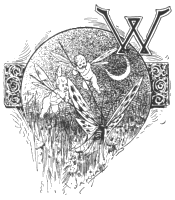

THE BOARD OF IMPROVEMENTS- pages 8-11 -
HEN this body cast its official eye over Norwood on the 14th of April, 1890, the date of its first meeting, very few presentable streets were sighted. Henry C. Meader and George T. Hipple were the members who acted with the mayor, but Mr. Hipple resigned and Williams Windhorst was chosen to fill the vacancy. The miles of improved streets and the legislation for many more that are to follow is the overwhelming evidence that many be offered to prove the grand works this little board endorsed. Both gentlemen are as well and favorably known in Cincinnati as they are by their neighbors. Mr. Meader is the Fourth street ticket broker, and Mr. Windhorst, the dry goods merchant, a member of the Main street firm of Hohnstedt & Windhorst.
Charles A. Ewing succeeded Mr. Hosbrook as village engineer, in May, 1891, and he held that position until June, 1892, when it was deemed advisable to secure a resident engineer, and James M. Harper was installed and is still serving in that capacity. During Mr. Ewing's term the character of street improvements were changed from primitive form to those more befitting a municipality, and by the end of the season, $135,000 worth of improvements had been made under his supervision. Some idea of the wonderful strides Norwood has made in the cause of good streets and good sidewalks may be gained from figures which embraced the completed improvements up to March 15, 1894. Engineer Harper reported that at that time 13-3/10 miles of streets had been macadamized at a cost of $335,100.46, the average per foot being $2.83.26. Park and Floral avenues are the only asphalt streets in the village, and they cost $62,259,59 to build a stretch of 1-36/100 miles, the average being $7.87.8 a foot. Brick streets are not common and only 3/10 of a mile has been improved in that manner, at a cost of $6,282.36, or an average of $5.61.43 a foot. Of cement walks there are 18-3/10 miles laid at a cash cost of $93,281.59. The average expense to property owners was $0.49.30, or a few mills less than half a dollar a foot. At the time this report was made the improvements of Forest, Harris, Elm and Hudson avenues were under way. With the completion of the former thoroughfare came the solution of a problem that proved a puzzling one for several years. Forest avenue is now the connecting link between South and East Norwood. The ravines that divided these divisions of territory have been filled up, and one of the most important of all the great public works in the life of the young village successfully accomplished by pluck, energy and perseverance. At the same time the water works jubilee takes place it is fitting for East Norwood to claim her younger sister for a bride. All is ready for the wedding. ——— – ——— |